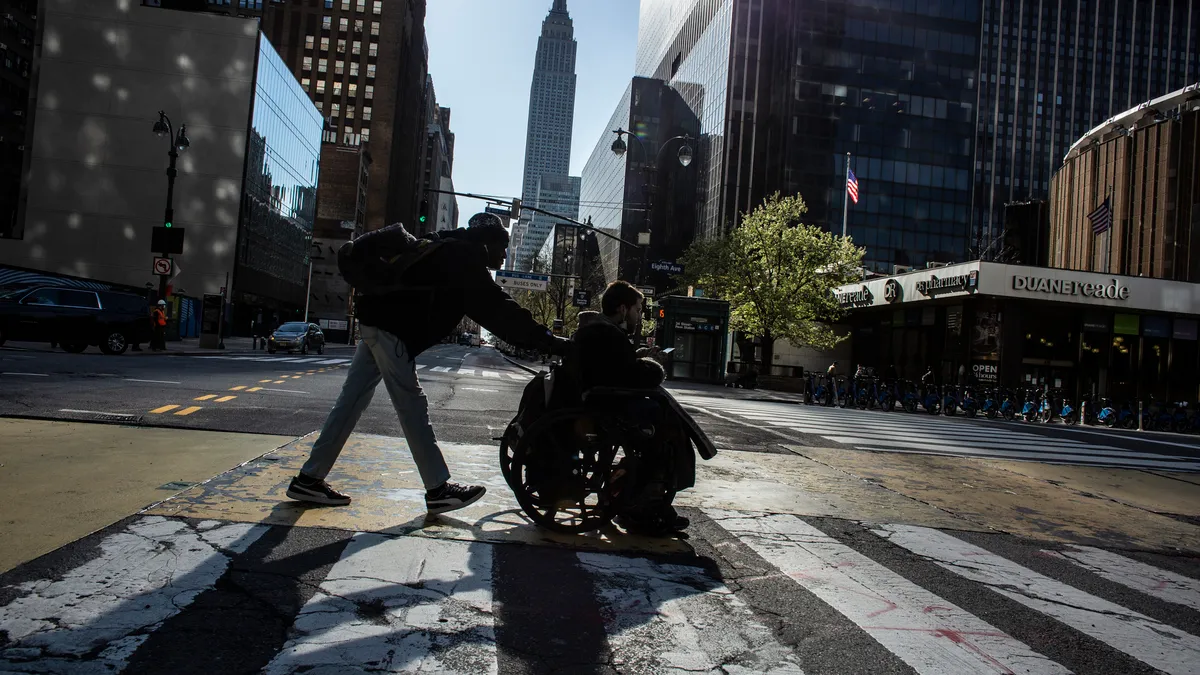Dive Brief:
- The U.S. Department of Transportation published a proposed rule on Aug. 22 to incorporate accessibility guidelines for pedestrian facilities in the public right-of-way, including sidewalks, crosswalks, pedestrian traffic signals, transit stops and on-street parking.
- The guidelines that DOT looks to incorporate were issued last year by the Architectural and Transportation Barriers Compliance Board.
- Those guidelines, which became effective Sept. 7, 2023, fall under the Americans with Disabilities Act, which applies to state and local government facilities among others, and the Architectural Barriers Act, which applies to many federal facilities.
Dive Insight:
Until now, state and local governments have been left to determine how to comply with the ADA’s mandate to make public pedestrian transportation facilities accessible to people with physical or mental impairments or a history of impairment, according to the Architectural and Transportation Barriers Compliance Board. The board’s accessibility guidelines will serve as the basis for enforcing standards.
The DOT interprets the guidelines as including transit stops, which it defines as “an area that is designated for passengers to board or alight from buses, rail cars, and other transportation vehicles that operate on a fixed route or scheduled route, including bus stops and boarding platforms.” The definition excludes intercity rail except where a stop is located in the public right-of-way.
The DOT said it has concerns with the location of some transit stops that overlap with vehicular lanes, including bicycle lanes, that may put some people with vision issues or who use wheelchairs at risk of being struck by a motorist or bicyclist. The department is asking for comment on these concerns and is interested in potential solutions other than prohibiting colocation of transit stops and vehicular lanes.
The DOT rule, which is open for public comment until Sept. 23, 2024, will apply only to new construction or alterations of transit stops in the public right-of-way.












